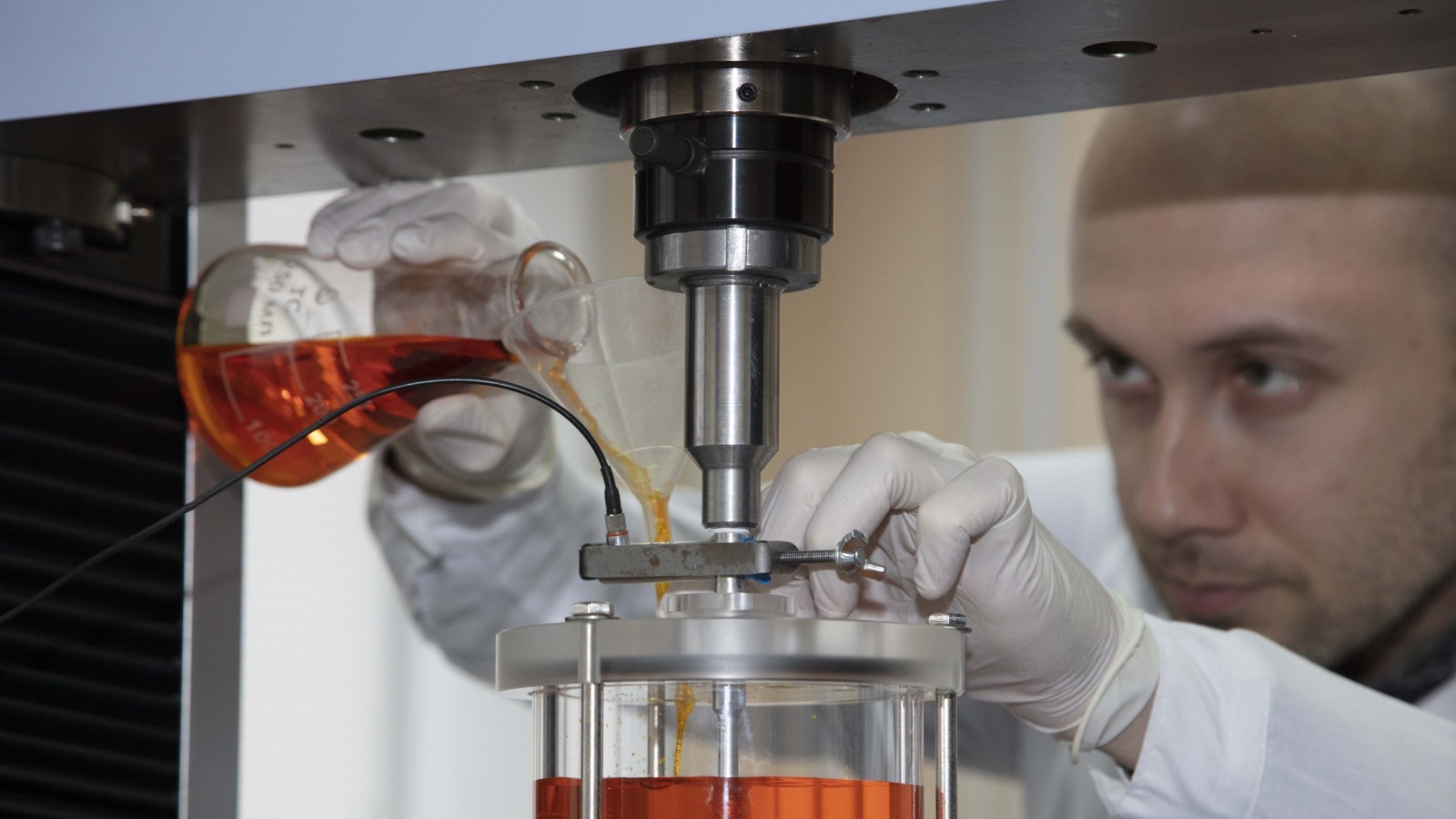Hydrogen Fluoride Boosts Process Speed and Purity

Magnesium alloys that can dissolve in the human body (bioresorbable) are now of great interest to implantologists because they do not require repeated operations to extract them.
“But the problem with all bioresorbable magnesium alloys is that they dissolve too quickly, and it is quite difficult to regulate the resorption rate, and we have to do this because there are different tasks for which these alloys are used,” says Evgeny Merson, head of the Precision Microscopy Laboratory at the Research Institute of Progressive Technologies (RIPT) of TSU. “For example, it is one thing when there is a screw screwed into bone, but it is quite another thing when there is a plate in contact with soft tissues. The dissolution rate will be different because there is practically no fluid circulation in the bone; there is only ion exchange there, while in soft tissues the circulation is more intense and the environment is more aggressive. That is why the whole world is now working on learning how to control the dissolution rate of magnesium implants.”
Different approaches are used: chemical composition is changed, microstructure is varied, and various surface treatments are applied, for example, the application of protective coatings. Researchers of the TSU RIPT decided to treat magnesium alloy with hydrofluoric acid (a solution of hydrogen fluoride (HF) in water) and got a triple positive effect.
“We found that various contaminants, such as cutter fragments, remain on the surface of the samples after turning, which accelerates corrosion. Secondary phase particles also accelerate it. What does that mean? For example, our alloy consists of magnesium, zinc, and calcium. The alpha phase is the crystal lattice of magnesium with zinc and calcium atoms embedded in it, and there are also secondary phase particles, which have a different chemical composition and, as a rule, a more positive electrode potential compared to the alpha matrix. Thus, being in an electrically conductive medium, for example, in any water-salt solution, including human blood plasma, they create a galvanic pair and are able to increase the dissolution rate of the alpha phase. Hydrofluoric acid dissolves both cutter metal fragments and secondary phase particles, thus slowing down the corrosion rate of magnesium alloy,” said Evgeny Merson.
He recalled that TSU is preparing to launch the production of bioresorbable implants made of magnesium; they will be produced on lathes with the use of cutters, which will inevitably leave steel particles on the surface of the products.
“Our method is technologically advanced; it allows us to process a large number of products at one time. You cut the screws, hold them for 15 minutes in a bath of acid, and that's it. They are processed, there are no contaminants on them, the corrosion rate is reduced,” the scientist emphasized.
In addition, the interaction of magnesium with hydrogen fluoride on the surface of the sample creates a thin layer of magnesium fluoride, a film that is poorly soluble in water-salt solutions.
“This film protects magnesium when it is in contact with water or human blood plasma, for instance, and, accordingly, slows down the rate of dissolution of the alloy itself. Thus, we get a triple effect: dissolution of particles of surface ‘contaminants’, dissolution of particles of secondary phases, and formation of fluoride film—all this together gives us the desired improvement of corrosion properties,” says Evgeny Merson. “Of course, there have been similar works, but the peculiarity of our research is that these effects were not shown for alloys of the Mg-Zn-Ca alloying system.”
In addition, TSU materials scientists investigated the effect of alloy treatment with hydrofluoric acid on so-called stress corrosion cracking.
“Plates and screws used to fix broken bones are under constant or cyclic load, for example, as a person moves, walks, chews, etc. The simultaneous exposure of the metal to an aggressive environment and mechanical stress creates favourable conditions for the development of a phenomenon called ‘stress corrosion cracking’. It is dangerous because it can cause premature destruction of the implant installed in the body even long before the beginning of its noticeable dissolution, and then a repeated operation will be needed,” explains Evgeny Merson.
It turned out that treatment in hydrofluoric acid not only reduces the dissolution rate but also increases the resistance of the alloy to stress corrosion cracking. Besides, it is also completely harmless for the human body, which was confirmed by in vitro tests in the Centre of Medical Chemistry of Togliatti State University.
“We placed the alloy treated with hydrofluoric acid in an aggressive environment similar in properties to human blood lymph, kept it there, and the products of what transferred into this environment from the alloy were used to affect cells. It turned out that these products have no cytotoxic effect on cells, which means that the treatment of the alloy with hydrogen fluoride will not lead to any fatal consequences for humans,” said the director of the TSU Centre of Medical Chemistry, Alexander Bunev.
The article, prepared by scientists from Togliatti State University, was published as an invited paper in the journal Metals of the Multidisciplinary Digital Publishing Institute (MDPI). This is a highly rated, peer-reviewed open access journal in materials science and engineering (Q2 level) based in Basel, Switzerland.
717
views